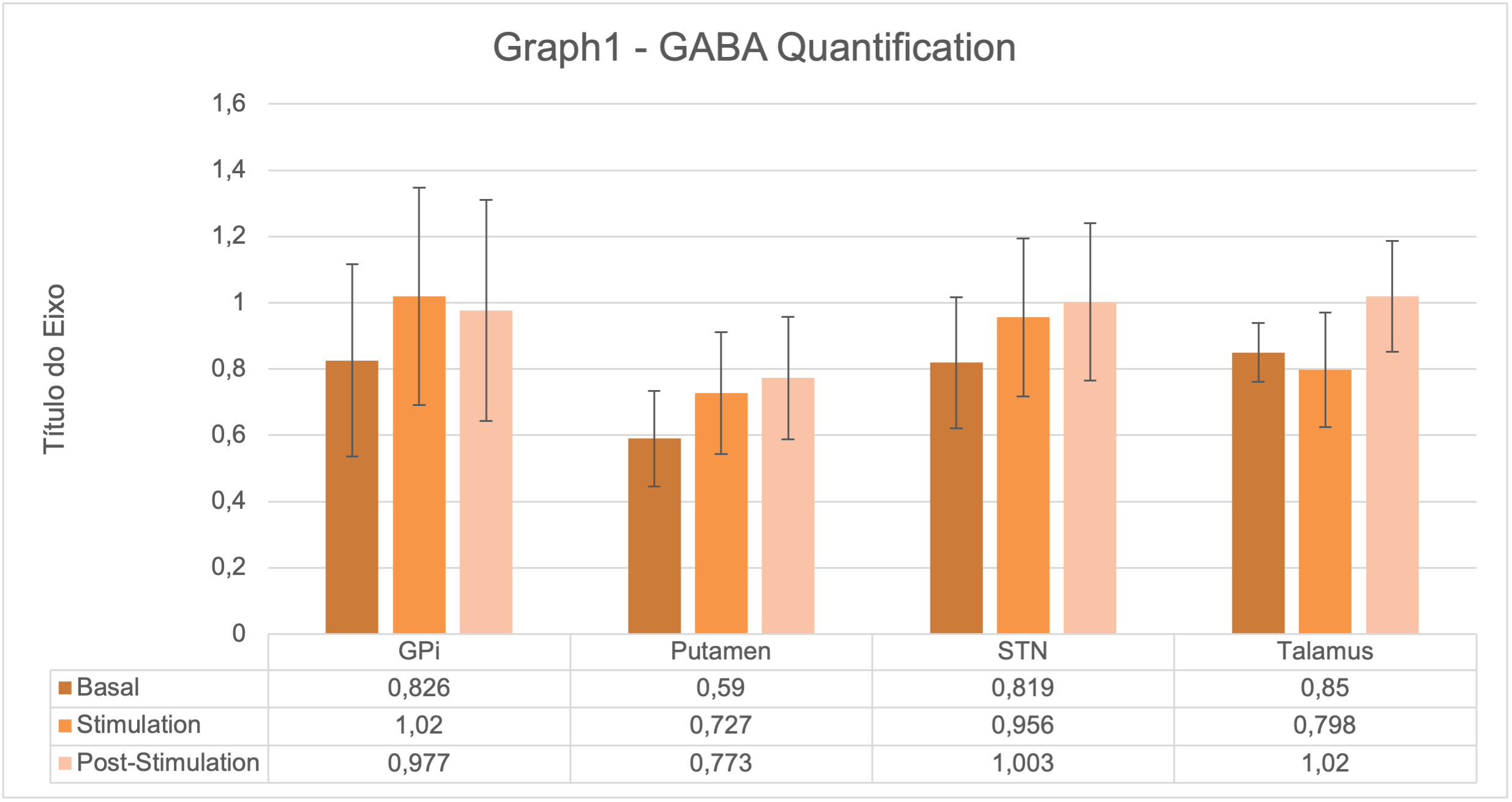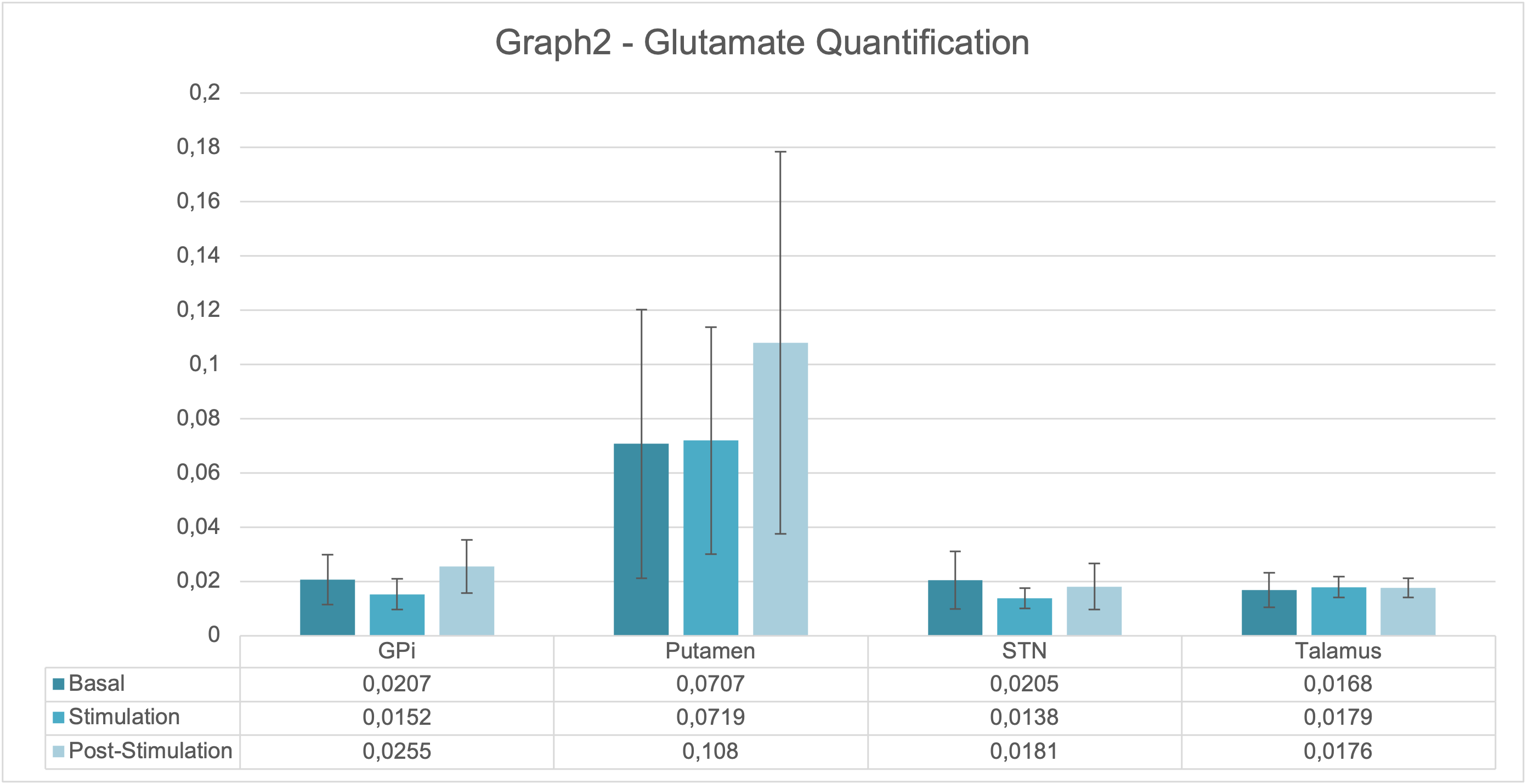Category: Surgical Therapy: Parkinson's Disease
Objective: Analyze the extracellular concentrations of GABA and glutamate in response to acute electrical stimulation during DBS surgery using samples obtained from STN, thalamus, GPi and putamen via intraoperative microdialysis.
Background: GPi and STN-DBS is a recognized treatment for Parkinson’s disease (PD). Despite its widespread use, the mechanisms underlying DBS’s effects remain to be fully elucidated and objective evidence is lacking. It is hypothesized that the stimulation exerts an inhibitory effect on neuronal activity, potentially through the release of GABA, thereby modulating dysfunctional neural circuits and promoting return to a more physiological state.
Method: Intracerebral microdialysis was conducted on 6 patients undergoing STN-DBS and 4 patients undergoing GPi-DBS implantation. These participants were enrolled in a randomized trial comparing STN vs GPi DBS. Using the standard trajectory for DBS electrode implantation, microdialysis probes were positioned in the STN and thalamus for patients with STN as their target and in the GPi and putamen for patients with GPi as their target. The microdialysis probes were inserted contralaterally to the side of body most affected by PD. After microelectrode mapping defined the target, two dialysis probes and the definitive electrode were inserted through a five-channel system, reaching the targets. Dialysates were collected sequentially at 10-minute intervals, comprising 3 samples for stabilization, 3 for baseline, 1 during high-frequency stimulation of the target, and 3 post-stimulation. The concentrations of GABA and glutamate were quantified using high-performance liquid chromatography (HPLC).
Results: There was a significant increase in GABA levels in GPi (F(1,2)=5.53, p = 0.04), NST (F(1,2)=5.44, p = 0.02) and Putamen (F(1,2) = 6.92, p = 0.01) during and post stimulation compared to baseline levels (Graph1). Regarding glutamate, there was no statistically significant difference in levels in the evaluated targets (Graph2).
Conclusion: Our findings demonstrate, for the first time in a human cohort, that acute high-frequency stimulation increases GABA concentrations within the GPi and STN. This corroborates the hypothesis that DBS activates presynaptic afferent terminals and, in these targets, induces inhibition through the release of GABA. The increase in GABA within the putamen with GPi stimulation reinforces the modulatory impact of DBS on brain circuits.
Graph1: GABA quantification
Graph2: Glutamate quantification
To cite this abstract in AMA style:
M. Ghilardi, R. Martinez, I. Ivo Lebrun, M. Carvalho, A. Auada, M. Brandao, E. Barbosa, E. Fonoff. Understanding the Neurochemical Basis of STN and GPi-DBS: A Human Microdialysis Study [abstract]. Mov Disord. 2024; 39 (suppl 1). https://www.mdsabstracts.org/abstract/understanding-the-neurochemical-basis-of-stn-and-gpi-dbs-a-human-microdialysis-study/. Accessed December 23, 2025.« Back to 2024 International Congress
MDS Abstracts - https://www.mdsabstracts.org/abstract/understanding-the-neurochemical-basis-of-stn-and-gpi-dbs-a-human-microdialysis-study/


